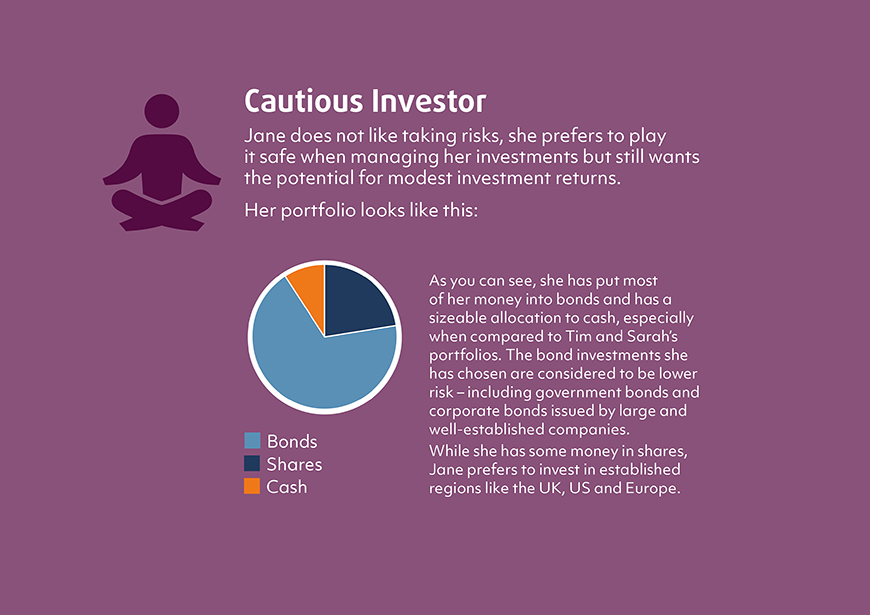| My favourite pages |


| Support topics
Need help in something? Take a look at our support area for your answer. Find out more |
Session Timeout
You have been inactive for 0 mins.
Stay logged in or you will be logged off in 60 seconds.
Quick content survey
As your feedback helps us improve our content and services, we'd appreciate it if you can spare a few moments to respond to the following statements.
Cash interest explained |
You will receive interest on balances in your platform cash account at the prevailing rate.
Embark Investment Services Limited acts as the custodian for investments on the Willis Owen platform and is one of our strategic partners that provides our Willis Owen ISA, GIA, Junior ISA and SIPP.
Embark places cash with a number of banking partners for safekeeping and to provide the potential for you to earn interest on money in your platform cash account. By managing cash in this way, it aims to provide better protection and a higher overall level of interest than if all funds were placed with a single bank.
The rates of interest paid by banks will vary. Embark retains a portion of the interest earned to cover its costs in managing platform cash.
Current Interest Rate
The table below shows the current customer interest rate payable on cash balances along with the amount of interest retained by Embark. The customer interest rate shown is that after accounting for interest retained by Embark:
| Date From | Customer Interest Rate | Interest retained by Embark |
|---|---|---|
| 18th August 2025 | 1.85% | 1.65% - 1.90% |
Embark can change the rate of interest at any time and it reviews the position at least quarterly. Interest is calculated and accrued daily and is credited to your account on the first of each month. If you transfer out, accrued interest is applied at the point of transfer. We will inform you if and when the interest rate changes as soon as is practicable.
Interest retained
The table below shows the yearly equivalent rates of interest Embark expects to pay based on a range of possible yearly interest rates it may earn.
| Interest Embark expects to earn | Customer Interest Rate | Interest retained by Embark |
|---|---|---|
| 0-1% | 0 – 0.46% | 0 – 0.54% |
| 1-2% | 0.46% – 0.94% | 0.54% – 1.06% |
| 2-3% | 0.94% – 1.46% | 1.06% – 1.54% |
| 3-4% | 1.46% – 2.02% | 1.54% – 1.98% |
| 4-5% | 2.02% – 2.61% | 1.98% – 2.39% |
| 5%+ | 2.61%+ | 2.39%+ |
Historic Interest Rates
To see details of historic customer interest rates, along with the amount of interest retained by Embark, click here.
Equity Styles Explained |
Market capitalisation is an indication of the size of the companies being invested in. It is calculated by multiplying the number of shares issued by the company by the current share price. Market capitalisation is divided into ‘large’, ‘medium’ or ‘small’ according to the below:
Large – Companies that have a market capitalisation greater than $10 billion.
Medium – Companies that have a market capitalisation between $2 billion and $10 billion.
Small – Companies that have a market capitalisation below $2 billion.
Companies can be categorised as ‘value’, ‘blend’ or ‘growth’ as defined below:
Value – Companies that are considered to be trading at a share price below what their fundamentals would suggest.
Blend – Companies that do not exhibit solely value or growth characteristics.
Growth – Typically well-established companies which are considered to have above average prospects for long-term growth.
Equity Regions Explained |
Equity region indicates in which countries the underlying shares within your portfolio are listed.
USA – Companies listed on a stock market in the USA.Canada – Companies listed on a stock market in Canada.
Latin America – Companies listed on stock markets in the Caribbean, Central America and South America, such as Mexico, Brazil and Argentina.
United Kingdom – Companies listed on a stock market in the United Kingdom, Guernsey, Isle of Man and Jersey.
Eurozone – Companies listed on stock markets in countries which have the Euro as their official currency, such as France, Germany and Spain.
Europe ex Eurozone – Companies listed on stock markets in western European countries which do not have the Euro as their official currency, such as Denmark, Sweden and Switzerland.
Europe Emerging – Companies listed on stock markets in European emerging markets, such as Poland, Russia and Turkey.
Africa – Companies listed on stock markets in African countries, such as Egypt, Nigeria and South Africa.
Middle East – Companies listed on stock markets in Middle Eastern countries, such as Israel, Qatar and Saudi Arabia.
Japan – Companies listed on a stock market in Japan.
Australasia – Companies listed on stock markets in Australia and New Zealand.
Asia Developed – Companies listed on stock markets in developed Asian countries, such as Hong Kong, Singapore and Taiwan.
Asia Emerging – Companies listed on stock markets in emerging Asian countries, such as China, India and Thailand.
Equity Sectors Explained |
Cyclical – Companies which operate in industries that are considered to be significantly affected by economic shifts. When the economy is prosperous, these industries tend to expand and when the economy is in a downturn they tend to shrink.
Basic Materials - Companies that manufacture chemicals, building materials and paper products. This sector also includes companies engaged in commodities exploration and processing.
Consumer Cyclical - This sector includes retail stores, auto and auto-parts manufacturers, restaurants, lodging facilities, specialty retail and travel companies.
Financial Services - Companies that provide financial services include banks, savings and loans, asset management companies, credit services, investment brokerage firms and insurance companies.
Real Estate - This sector includes companies that develop, acquire, manage and operate real estate properties.
Sensitive – Companies that operate in industries that ebb and flow with the overall economy, but not severely. Sensitive industries fall between defensive and cyclical, as they are not immune to a poor economy, but they also may not be as severely affected as cyclicals.
Communication Services - Companies that provide communication services using fixed-line networks or those that provide wireless access and services. Also includes companies that provide advertising & marketing services, entertainment content and services, as well as interactive media and content provider over internet or through software.
Energy - Companies that produce or refine oil and gas, oilfield-services and equipment companies and pipeline operators. This sector also includes companies that mine thermal coal and Uranium.
Industrials - Companies that manufacture machinery, hand-held tools and industrial products. This sector also includes aerospace and defence firms as well as companies engaged in transportation services.
Technology - Companies engaged in the design, development and support of computer operating systems and applications. This sector also includes companies that make computer equipment, data storage products, networking products, semiconductors and components.
Defensive – Companies which operate in industries that are relatively immune from economic shifts. These industries provide services that consumers require in both good and bad times.
Consumer Defensive – Companies that manufacture food, beverages, household and personal products, packaging, or tobacco. Also includes companies that provide services such as education and training services.
Healthcare – This sector includes biotechnology, pharmaceuticals, research services, home healthcare, hospitals, long-term-care facilities and medical equipment and supplies. Also includes pharmaceutical retailers and companies which provide health information services.
Utilities - Electric, gas and water utilities.
Product Involvement Explained |
Product Involvement metrics measure the percentage of a portfolio's assets exposed to a range of business areas and activities. For example, if a fund's involvement in Animal Testing is 20%, that means 20% of the fund's assets are invested in companies involved in Animal Testing.
Exposure percentages are calculated by summing the weights of a portfolio’s holdings in the companies involved in each area. In most cases a company is considered ‘involved’ in a certain area if it's revenue from that area exceeds a certain minimum threshold. In other areas, for example animal testing, abortion, contraceptives and human embryonic stem cell research, there is no revenue threshold such that if the company has any involvement at all in these areas, it will be considered involved. If a company is considered involved in an area, the entire weight of that company in a portfolio is counted when determining the overall percentages shown.
|
|
ESG Pillars Explained |
Morningstar's ESG Pillar Scores help investors understand how a fund is performing in three key areas: Environmental (E), Social (S), and Governance (G). These scores break down the overall sustainability risk of a portfolio into these specific categories.
Each score reflects how much environmental, social, and governance factors contribute to the overall risk of companies in the fund. The scores are averaged based on the size of each company in the portfolio. Lower scores mean lower risk.
To receive these scores, at least 67% of the fund’s assets must be rated for their ESG risk. This provides investors with a clearer view of a fund’s exposure to sustainability risks in different areas.
Asset Allocation Explained |
Equity – Often referred to as shares. Shares are units of ownership in a company which entitle the holder to certain rights for example to exercise voting rights or to participate in the company’s profits.
Fixed Income – Often referred to as fixed interest or bonds. When you invest in bonds, you are typically lending money to a company or a government in return for a defined series of interest payments and the promise that a defined value (called the ‘face’ or ‘par’ value) will be returned at a certain point in time
Property – Investments in property include residential, offices, warehouses and shopping centres.
Cash – Money held in cash or cash-like instruments, often to ensure there are sufficient liquid assets within a portfolio.
Other – Contains other investments such as commodities, preferred stock and derivatives.

|
Ready to invest?
Simply choose an account and start investing today Discover our accounts |
Once you’ve decided how much risk you’re willing and able to take with your money, it’s time to start the process of designing your investment portfolio. Designing a balanced portfolio to match your chosen level of risk is about choosing different types of investments and blending them together in a way which maximises your potential returns, but which ensures you’re not taking on more risk than you’re comfortable with.
One of the most important things to think about when designing an investment portfolio is diversification. So, what does it mean?
Diversification is a risk management strategy that involves spreading out your money across different investments within your portfolio. It basically means “not putting all your eggs in one basket”.
Having a diversified portfolio can help reduce the amount of risk in your portfolio. Owning different types of investments can protect you if one of your investments falls. This is because different kinds of investments do not necessarily behave in the same way. By diversifying your portfolio across different types of investments or geographical regions for example, you could help to smooth out your investment returns, although remember with investing there are no guarantees.
The first step in designing your portfolio is to decide what proportion of your money to allocate to each of the different asset classes. We call this ‘asset allocation’.
Once you’ve decided on the broad asset allocation of your portfolio, you can then look to diversify even further within each asset class. For example, with shares, you could look to invest in British, Japanese or US shares among others. While fixed interest securities, you could look for a mix of corporate bonds or government bonds. There are many ways to diversify your portfolio.

Here are some useful suggestions which may help you to diversify your portfolio:
Funds - Buying and holding funds is a good start as these will provide you diversification on a particular asset class or investment strategy, so instead of just investing into one company, it can invest in a range that is aligned with the fund's objectives. In addition, it can also help reduce risk - if you have money invested in a fund no single company can hurt you too much. Your portfolio value will still rise and fall, but those swings will be smaller because they’ll be based on the collective movement of an entire group of companies instead of just one.
Asset classes - It is important to have your portfolio invested in different asset classes because they perform differently in different market conditions. You wouldn't want to have your portfolio invested in just one asset class, no matter how diversified you are within it, as you will still be exposed to the same risks that affect that particular asset class.
Go global - Having exposure to the rest of the world and not just one country’s stock market will help boost diversification. This gives you the opportunity to take advantage of different geographic regions with superior investment prospects. By sticking to your home market, you may miss out on growth or, indeed, income opportunities elsewhere.
Look at sectors - How exposed your portfolio is to different sectors is crucial to diversifying your portfolio. Companies in the same sector can face the same challenges, no matter what country they operate in. If that sector fails to perform, your overall portfolio may not perform well.
Use different strategies - Fund managers tend to have different investment styles but if you build a portfolio full of growth funds or income funds then your portfolio may not be very well diversified. It will perform well in certain circumstances but not in others. You can also spread your investments out between active and passive funds. Passive funds are cheaper and can give you low-cost exposure to one country or region, whereas active funds have higher fees but benefit from the skill of a fund manager who can allocate into particular areas of the market they feel will perform best.
Balancing your portfolio - If you have too many funds then you may find that no one fund will make a meaningful contribution to the performance of a portfolio. Typically, we would suggest a diversified portfolio can be achieved with as little as 10 funds. It is also recommended that you regularly review your portfolio to make certain that it remains suitable for your needs.
As you can see there are many ways to diversify your portfolio. No matter how much risk you are willing and able to take, you can still have a diversified portfolio. However, there is no magic formula to diversification and everyone’s goals and circumstances are different.